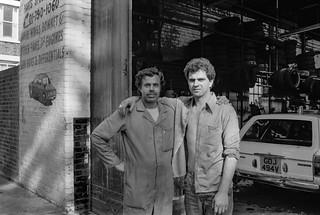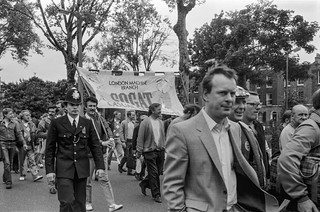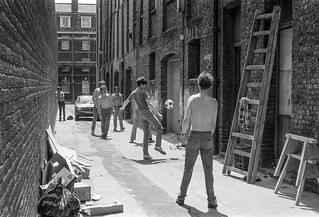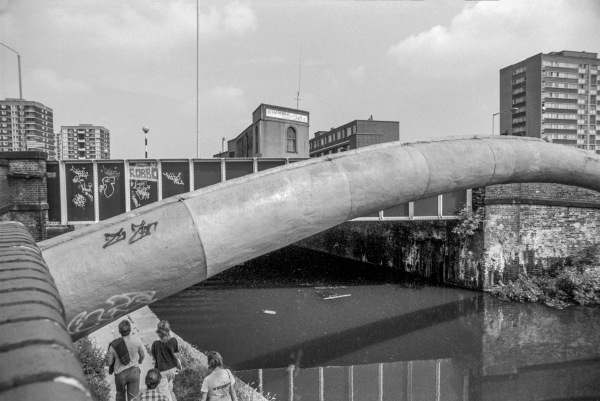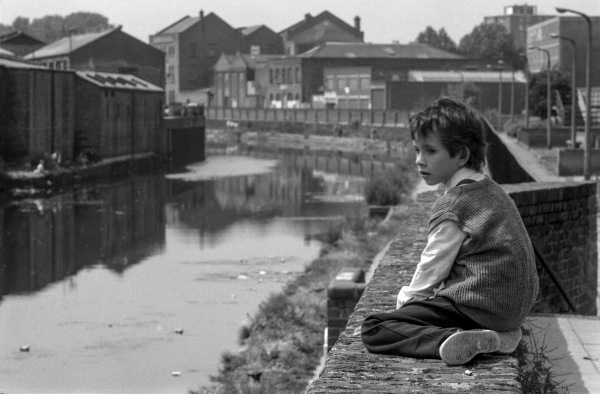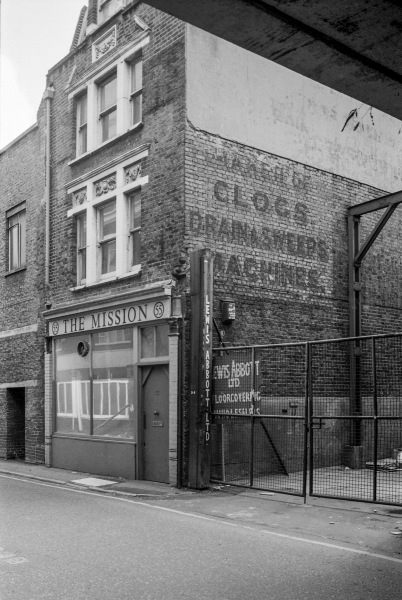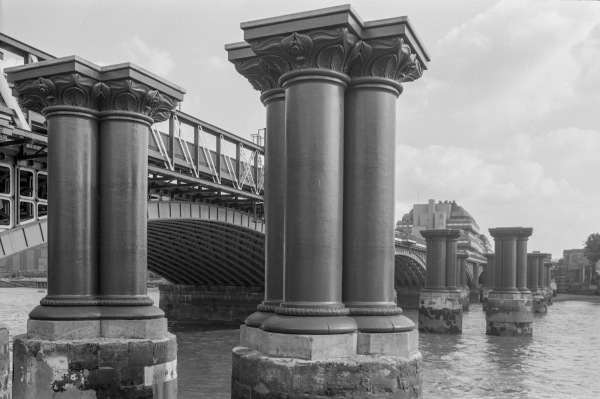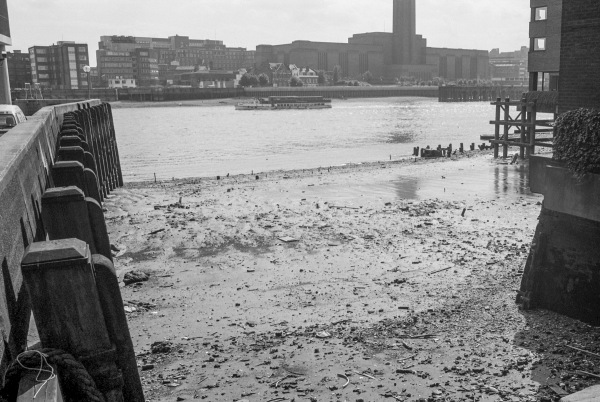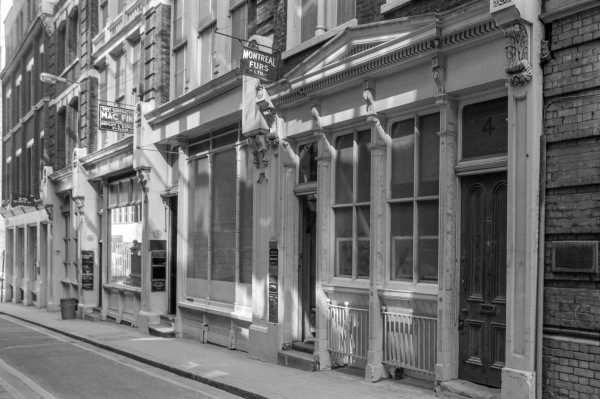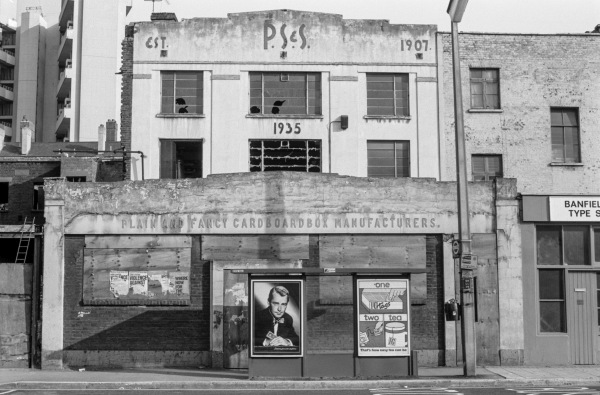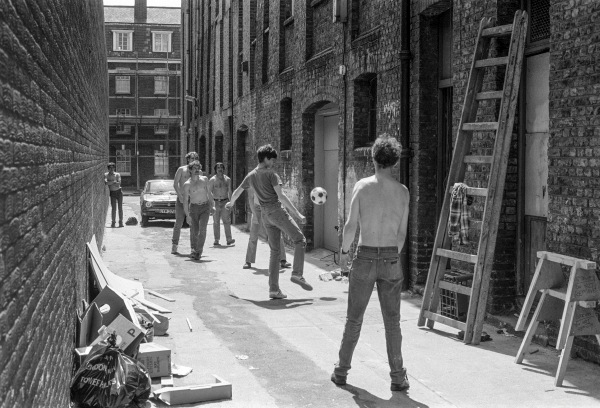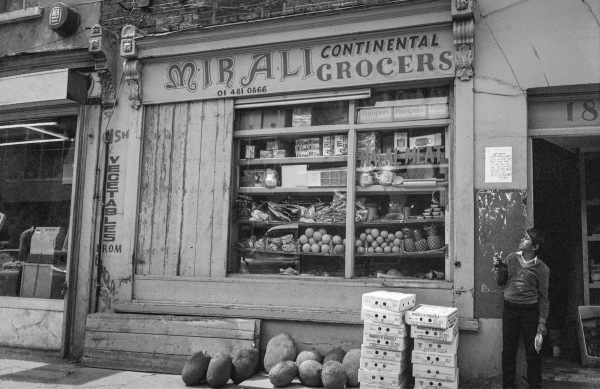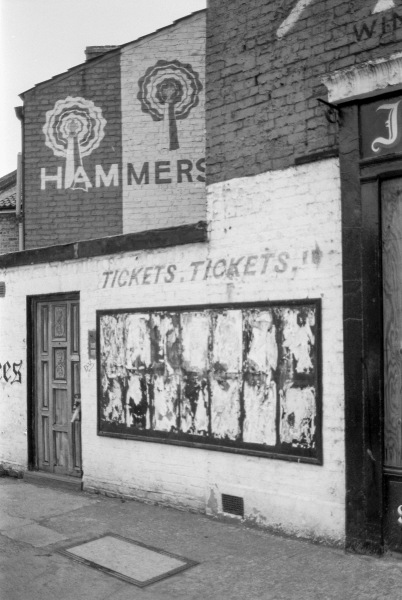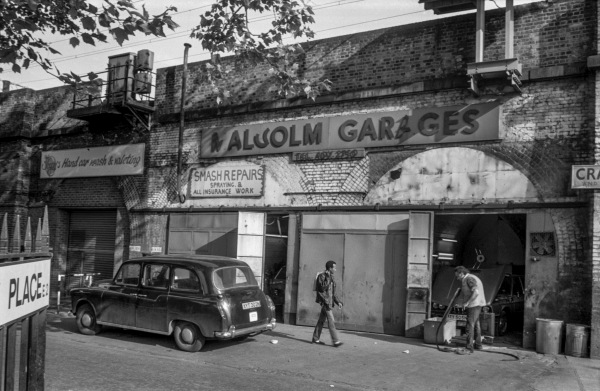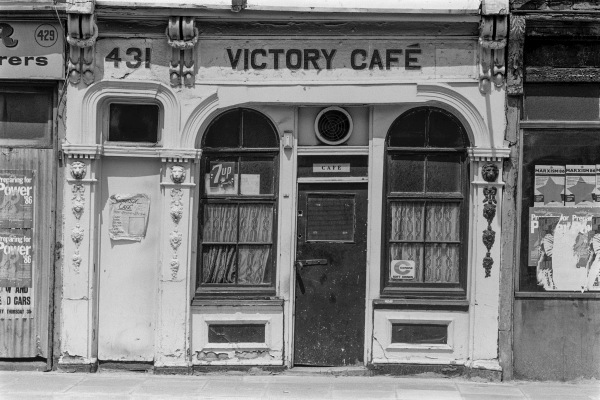I hope it will not disappoint anyone that this is only a post about the third page of my pictures from 1986 on Flickr! Though rather more than usual for me at that time do include people, I think all of them are fully dressed.
All of the pictures on this page are from the East End – Bethnal Green, Stepney, Globe Town, Mile End, Whitechapel, Old Ford, and I think a few in Hackney, though when walking the streets it isn’t always clear which area or even which borough you are in, though the street signs often tell you this. Nearly all of these pictures were taken in Tower Hamlets in June 1986.
I stopped to talk to this man fairly early on a Sunday morning, when he was sitting quite happily on the steps of a house, which I think was empty and derelict, though it did have an empty milk bottle on it, as well as his larger bottle of what I think was cider. He had taken his shoes off and it was a pleasantly warm morning and we had a short chat before I asked if he minded if I took his picture. I think he was actually quite pleased to be photographed, and I was pleased to take his picture, though I would have photographed the house without him.
I was photographing this shopfront too when these two young men came out from inside to be in the picture too – and they do improve it, adding a little asymmetry. I think I may have gone back a few weeks later and posted a copy of the picture through the door, as I often did when I’d photographed people, but I’m not sure. If not, perhaps they will see it now on Flickr.
Another business I photographed on several occasions was ‘Globe International Autos!’, whose frontage had some extensive painting, and again I was asked to take their picture by two men working there. There are four pictures of the business on this page, two at times when it was closed.
Back in the 1980s I wasn’t photographing protests, or at least only those which I was taking part in against racism, South African apartheid and nuclear weapons. I didn’t go to Wapping to photograph the year long “Wapping dispute” by print workers after Murdoch moved printing from Fleet St to a new factory there, ending ‘hot-metal’ printing and replacing it by new computer-based offset litho. Murdoch sacked around 6000 printers after the union refused to accept redundancy for 90% of the workers with flexible working, a no-strike clause, the adoption of new technology and the end of the closed shop.
Although Murdoch had been both devious and brutal, I’d known some in the print and something of the “Spanish Practices” that were apparently widespread in Fleet St. While as a trade unionist (and at the time a trade union rep) I supported the workers who had been extremely badly treated it was clear that change was inevitable.
A rather more upbeat picture was I think of workers enjoying a lunch-break kick-about in an alley just off the Cambridge Heath Road in Bethnal Green.
And the closest I came to a ‘Page 3’ picture were a couple of images of Frank Dobson’s “Woman and Fish” on the Cambridge Heath Road in Globe Town. The sculpture had been placed in Frank Dobson Square at the junction with Cephas St on the edge of the Cleveland Estate. Dobson (1886 – 1963) was born and worked extensively in London and the square to commemorate him was made by the London County Council the year he died, with the sculpture at its centre, one of several versions he made in 1951 (another rather uglier one is in Delapre Gardens, Northampton.)
Originally it was a fountain, with water emerging from the moth of the fish, but it was vandalised in 1977 and restored without water. It was restored again after various further vandalisations in 1979 and 1983 and had to be removed completely when restoration was impossible in 2002. A bronze replica by Antonio Lopez Reche in 2006 is now in Millwall Park, Isle of Dogs.
Unfortunately much of Dobson’s work remaining in his studio at the time of his death was destroyed by his widow because of its erotic content, but one of his finest works, London Pride is outside the National Theatre in London.


